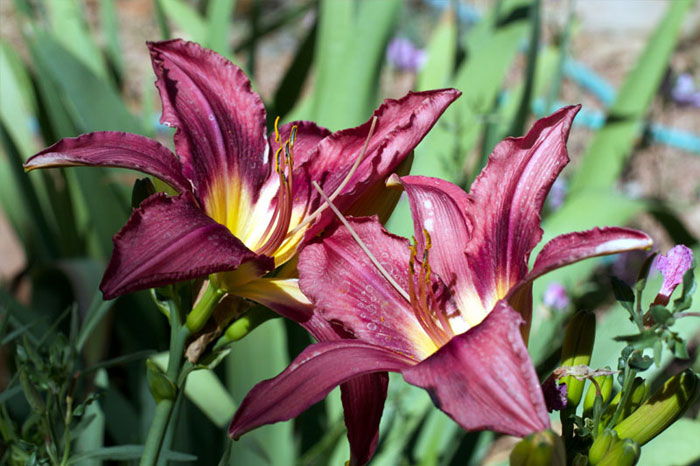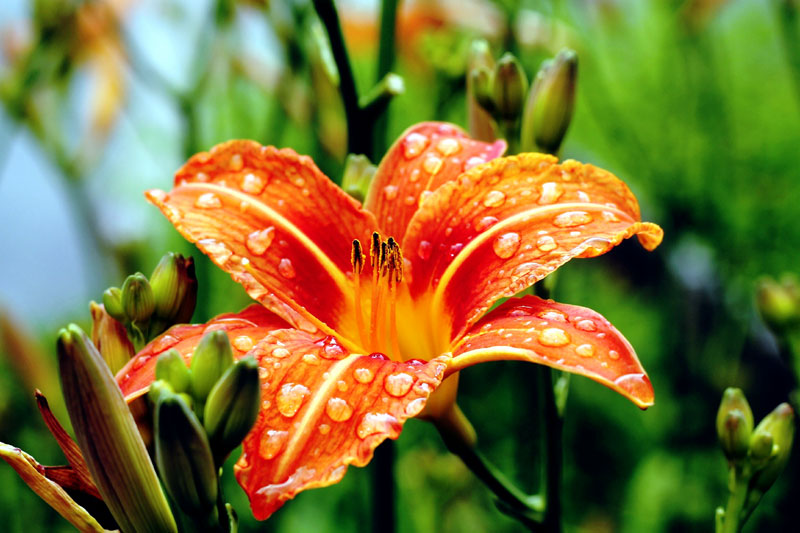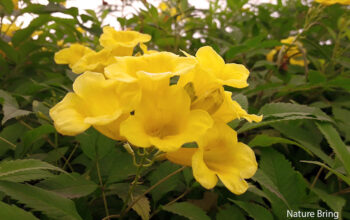Daylily (Hemerocallis)
Learn Growing Daylily, How to grow daylilies, Hemerocallis, Daylily care, You will get more information from this post. It is perennial flowers with fibrous roots. These are not true lilies, but they are genes of Hemerocallis, which means beauty for the day. And this right also its flowers bloom for only one day, and hundreds of flowers are ready to bloom in the entire season. It is long perennial blooming. Nature Bring has given some ideas that are different from the conventional planting bed and in fact, will help you display your Daylily.
Although early spring and early fall are the best time to grow it. For this, if your soil is sandy or heavy clay, then add organic substances. However, they prefer a little acidic soil. It likes full sun, it is necessary to have at least 6 hours of sunlight. Daylily is not only fabulous flowers, but they can be used in the edible form. Its flowers, buds, young stalks, and root tubers are used to eat. They are very tasty.

Classification
Scientific name Hemerocallis
Common name Daylily
Plant type Flower
Sun requires Full Sun
Blooming time Late spring to fall
Flower colors Pink, red, orange, white to yellow, Scarlet, and purple
Soil any / well-drained
Soil pH 6.5-7
Zone 3-9
Growing daylily
Location and soil
The daylily y grows well in garden soil. However necessary compost and drainage are needed to promote its healthy growth and more blooming. If the soil is too sandy, it dries easily, adds compost to keep moisture. Adding compost to the heavy soil will also benefit. On the basis of variety, it can develop the zone area 3-9. Daylily likes the presence of the full sun, for this, you should choose a place where there is a minimum of 6 hours of sunshine, save from the afternoon sunshine in the summer season, although they tolerate partial shadows, production will get less.
Daylily Propagation
You can divide and transplant very easily. Routine maintenance is necessary as time goes on. In about 3 to 4 years this plant gets crowded and the production of flowers decreases. This is the best time to divide it. It encourages growth and the new growth will increase the production of flowers. You can transplant the plant at any time when the soil is workable and moisture. Water well after transplantation in the new place.
Divide daylilies
After 4-5 years, when the clumps of daylilies become crowded, it is necessary to divide it, otherwise, the production of flowers is reduced the most suitable time to divide it into most areas is late summer, another option is for the northern areas, spring, if the weather is rapidly turning into a fall.
Spacing
Daylily has spread its wings in a big diameter of three feet. So keep the distance of 2 feet or more when planting. This will save you from the hassle of switching the plant and digging. And if you want additional effect from the beginning of the year, then keep the new plant 18 inches apart. After some years you can move many plants outwards.
Planting
You can plant daylily plants early in the spring or early fall (a month before the hard frost). To plant a bare root daylily, dig deeper and wider potholes from the roots. Spread the thick roots in the hole, place the crown above the hole and the part where the roots and leaves get in, they are in about 1 inch of soil. Hold the crown of the plant and fill with the surrounding soil and press on the two sides of the crown.’
Daylily care
The presence of the perfect sun is good for the daylily, its 6 hours moist soil present in the sun is the best in heat climate. If they are kept in the right place, then it keeps blooming for years with little care.
Fertilizing
Fertilizer is needed to keep this plant healthy and to encourage more flower production. Use basic fertilizer 10-10-10 in the spring season when they produce the flower. Organic manure is the best performance. Use lower levels of nitrogen for more flower production, using more nitrogen will improve the plant, but the production of flowers will be less. Add 2-inch thin layer of mulch to each spring, it will help with weed control and maintain moisture retention. Read more
Watering
Most of the daylily are drought tolerant, but during hot weather, they should be given water. Time to time watering encourages the production of flowers. If the water is less than 1 inch per week during the summer, then water the plant regularly.
Mulching
Use bark or 2-inch manure layer to control moisture retention in plants and control the weed.
Pruning
To encourage the production of flowers and to prevent seed formation, it is necessary to cut the stalk, cut it apart. Cut dead and cut leaves into late fall or spring and separate them. This will encourage leaves and new plants.
Daylily problem
These plants may have trouble with some pests. Fungal infection is attacked and spread throughout the county. To prevent fungal infections or other plant diseases, cut off the infected area and keep the plant in air-circulation areas.
Read also:
How to grow Liatris (Blazing star). Growing and planting Freesia flowers. 11 best Winter Flowers for your Garden. 8 Best Frugal Gardening tips. How to grow Black Pepper. How to grow Gerbera plant in containers. Growing Amaryllis from bulbs
For Pin:






